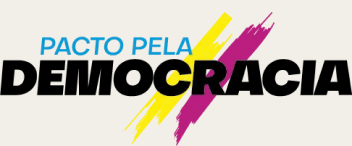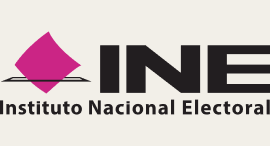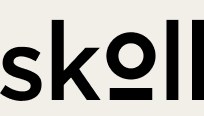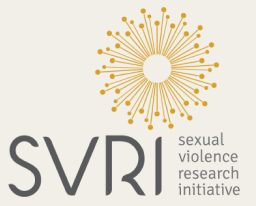Shortly before the COVID-19 pandemic took hold in the Philippines, a volcano about 31 miles south of Manila erupted on a quiet Sunday afternoon in January 2020, after 47 years of fitful rest. The Philippine Institute of Volcanology and Seismology (Phivolcs) immediately raised risk levels and informed the public of a moderate level of volcanic activity. When the volcano’s ash explosions became stronger, the organization warned “of imminent hazardous eruption.” The government immediately undertook forced evacuation of thousands of families from the volcano island and villages surrounding Taal lake, as it declared those ashfall-covered areas surrounding the volcano as no man’s land.
During the emergency, scientists at Phivolcs were near precise with their news bulletins and firm with warnings, even when some residents and local government officials complained of the restrictions imposed. Philvolcs did not lack defenders when a popular broadcaster and some lawmakers accused the agency of failing to warn the public about Taal volcano’s eruption. In general, the emergency science communication following the eruption of the volcano was hailed as a swift success.
It was on the heels of the volcanic crisis that COVID-19 made its way to the Philippines—a disaster for which communication was not nearly as smooth.
The month-long eruption of the Taal volcano affected more than 500,000 people in four provinces, and killed 39 people, but had “minimal,” effect on the national economy. It is not generally comparable to the magnitude of the calamity that the COVID-19 pandemic has so far caused, which economists estimate to reach P276.3 billion (US$5.5 billion) to P2.5 trillion (US$50.2 billion). However, crisis communications amongst leadership may be one element through which the two deadly events can be compared.
Philippine health officials went through anger, frustration and distrust from the public before their pandemic efforts were appreciated. So far, the virus has afflicted more than 70,000 people and claimed the lives of at least 1,800 others as of July 22, 2020 in the country.
The tide of public sentiment turned for the national Department of Health (DOH) when it decided to put competent officials untainted by politics on the front line, like Assistant Secretary Maria Rosario Vergeire, the spokesperson for COVID-19 related matters.
Regardless, newly-gained public trust enjoyed by DOH still does not extend to the head of the office health chief, Secretary Francisco Duque III, whose resignation was demanded by a majority of senators. Nor does it include President Rodrigo Duterte, whose midnight briefings on COVID-19 have become a source of annoyance, confusion and information disorder.
Duque, an immunologist and pathologist and a graduate of Harvard School of Public Health, presided over the 2009 H1N1 outbreak during his first stint as health secretary. Despite his experience, the country’s top public health authority dilly-dallied on crucial issues related to COVID-19 at the beginning of the pandemic. Appearing in a Jan. 29 hearing on COVID-19, called by the House of Representatives, Duque towed the line of President Duterte, that there was no need to impose a travel ban to and from China, not even to and from the province of Hubei where Wuhan, the first epicenter of the novel coronavirus disease outbreak, is located.
“If we do this, then the concerned country, China in this case, might question why we’re not doing this for all the other countries that have reported confirmed cases of the [COVID-19],” Duque said. Critics said a health secretary should only be concerned about health matters, and should leave the business of diplomatic relations to the foreign secretary. Duque got an unlikely defender in the person of a Duterte critic, Sen. Leila de Lima, who is currently detained on allegations of drug trafficking. De Lima said the health secretary is merely implementing a policy set by the President.
Relations between the Philippines and China elicit intense sentiments among Filipinos, because the two countries are embroiled in a territorial dispute over islands in the South China Sea. The Philippines has won the case in the Permanent Court of Arbitration in The Hague in 2016, but the Duterte government decided to set aside the legal victory in favor of closer relations with the economic superpower, which has built artificial islands turned military garrisons in the disputed maritime area. Filipinos also resent the influx of Chinese working in online gaming in the country that, although it has boosted the real estate industry, has spawned criminal activities including corruption, prostitution and murders.
Eventually, the government imposed a COVID-19 travel ban which many saw as superfluous, because by that time, Hubei was already on lockdown. Duterte extended the travel ban to cover any person traveling directly from China, Hong Kong, and Macau, with the exception of Filipinos and holders of permanent resident visas. Later, he included Taiwan in the travel ban following the country’s One- China policy that considers the island state a province of China. It was lifted after a few days following a protest from Taiwan and uproar from the 160,000 Filipino workers there.
Face Masks
Conflicting statements and actions by government officials about face masks confused the public even further. On January 12, at around the same time that the world was being alerted about the outbreak of a “mystery virus” in Wuhan, the Taal Volcano erupted, spewing ashes that covered surrounding communities. The eruption resulted in a high demand for protective masks, which continued to be a valued commodity after the volcano’s alert level was lowered, and as the threat of the COVID-19 grew.
On Feb. 5 the third COVID-19 case in the country was confirmed to be a 60-year-old woman who came from Wuhan, China. The Land Transportation Franchising and Regulatory Board (LTFRB), the government agency which manages operations of public utility vehicles in the country, issued a memorandum ordering all public utility drivers and conductors “to properly wear face masks at all times while on duty.” Noncompliance would cause them a penalty fee of P5,000 for breach of franchise regulations. Three days later the Health Department issued an advisory clarifying that “people in good health” need not use face masks. Individuals who are sick, or those who usually come in close contact with the sick, are the only ones recommended to use masks. The DOH later acknowledged “it might be prudent for drivers to use a mask” since they are exposed to a lot of people daily.”
A Manila city official was seen incorrectly demonstrating, during a televised press conference, the right way to wear a face mask. Manila Vice Mayor Sheila “Honey” Lacuna-Pangan, a former physician at the Manila health office, told the public that when one is sick, one should wear the white part on the inside because the white side prevents or blocks the bacteria, and the blue side should be outside. The WHO, however, said there is only one proper way to wear surgical masks: the colored side is out. The video of that press conference has been taken down online.
This confusion and diminished credibility in authorities fueled rumors and speculations about public health precautions. A Jan. 22 post by a Facebook user, for example, claimed that the dreaded virus was already in the popular island resort of Boracay, in the southern part of the Philippines. The post, which VERA Files tagged as “False” was shared 5,600 times in just a few days. It was easy for the Boracay story to be believed because alarm was raised about the large number of tourist arrivals from Wuhan in time for the Jan. 25 Chinese New Year, before a lock down on the COVID-19 epicenter was imposed.
Riding on Duterte’s pro-China policy, a false report by the website City News (ab-tc.com) claimed that the President ordered the Philippine General Hospital (PGH) to accept COVID-19 patients from Wuhan. The post, showing an April 2019 Reuters photo of Duterte with Chinese President Xi Jinping, was shared by pro-Duterte groups and, using an app that measures potential reach of a certain post, could have reached 94,000 Facebook users.The panic that the misinformation created among the population resulted in cancellation of classes, conferences, cultural performances and pop concerts long before a Luzon-wide lockdown was imposed.
Press freedom: A casualty in a national emergency situation
On March 16 the Philippines had registered two deaths from COVID-19 infection and the confirmed infections increased to more than 40. President Duterte declared a nationwide state of calamity, to facilitate response and the release of funds to combat the fast-spreading virus.
Enhanced Community Quarantine was imposed throughout Luzon, the largest and most populous island in the country, including Metro Manila. Duterte called on the Armed Forces of the Philippines (AFP) and the Philippine National Police (PNP) to lead in the implementation of the quarantine guidelines.
On March 23, Philippine Congress passed a law (Republic Act No. 11469) giving the President “powers that are necessary and proper to carry out the declared national policy.” Punishable acts enumerated in the law, which is known as “Bayanihan to Heal as One Act,” include:
Individual or groups creating, perpetrating, or spreading false information regarding the Covid-19 crisis on social media and other platforms, such as information having no valid or beneficial effect on the population, and are clearly geared to promote chaos, panic, anarchy, fear, or confusion; and those participating in cyber incidents that make use or take advantage of the current crisis situation to prey on the public through scams, phishing, fraudulent emails, or other similar act.
Press freedom advocates and groups protested the inclusion of that provision in the law. The National Union of Journalists in the Philippines (NUJP) said: “While we acknowledge the need to fight disinformation in this time of crisis, we fear the Bayanihan to Heal as One Act will only end up criminalizing free speech.”
“In times of crisis, when the swift delivery of accurate information to our people is vital, we need more, not less, independent reporting,” NUJP added.
NUJP’s concern is not without basis. Human Rights Watch slammed authorities for the arrest of Maria Victoria Beltran, an artist from Cebu City in southern Philippines for “misuse of the law” over a Facebook post which she said was actually a satire.
On May 3, Press Freedom Day, PNP-Anti-Crime Group, in a press release, said 32 persons were arrested for “spreading fake news on social media portals that have caused panic among people.” It did not say what were the posts nor mention the names of those arrested.
The Commission on Human Rights (CHR) has reminded the government that public service requires a higher tolerance for opinions and criticisms, especially that a democracy works best when there are healthy discourses on governance; thereby, allowing greater accountability from our public officials.
We collaborated with 53 partner organizations worldwide to design and carry out our 2024 elections projects. We extend special gratitude to our lead partners in Brazil, Mexico and Pakistan, whose work we highlight in this essay.



The 2024 elections projects featured in here would not have been possible without the generous support of these funders.










